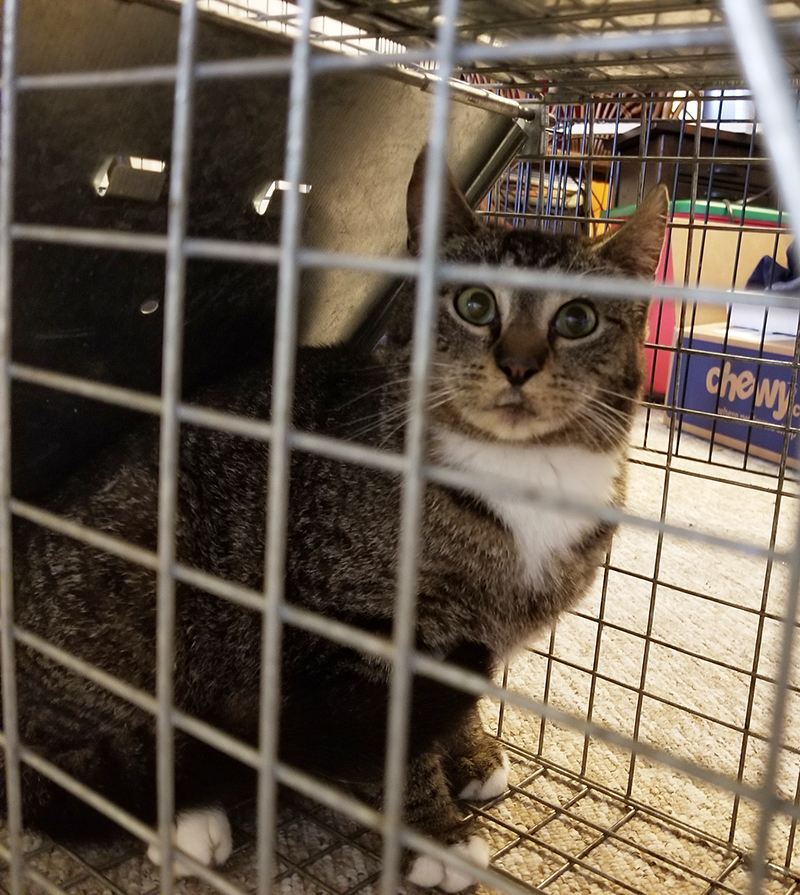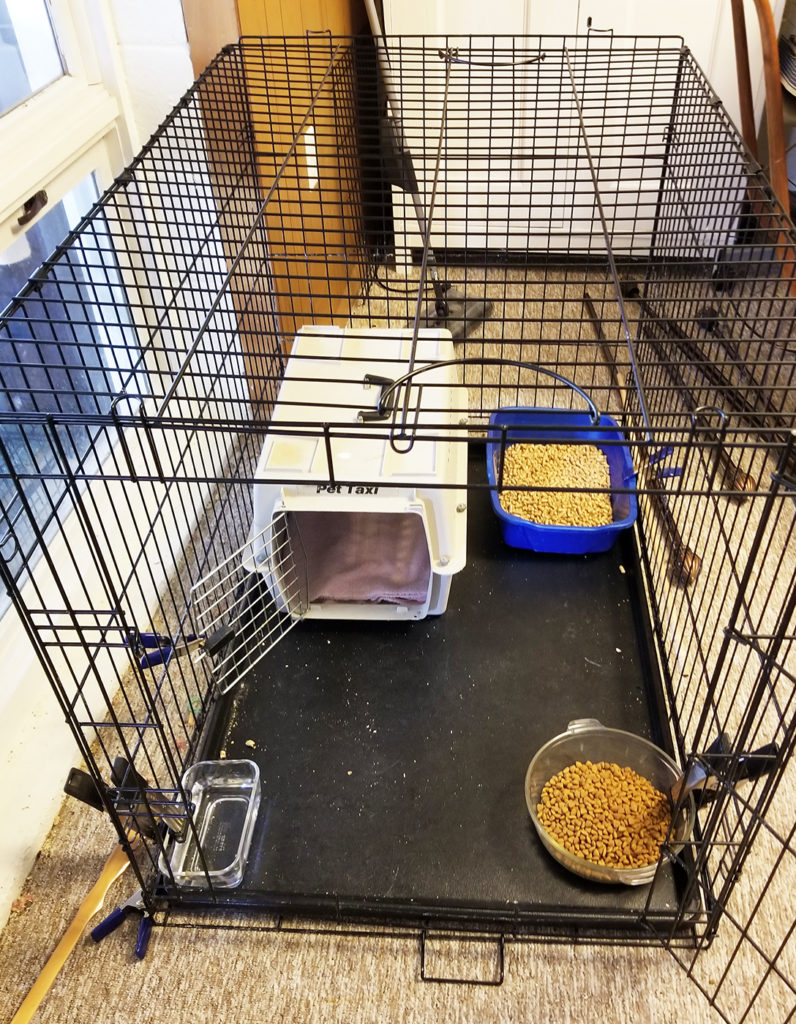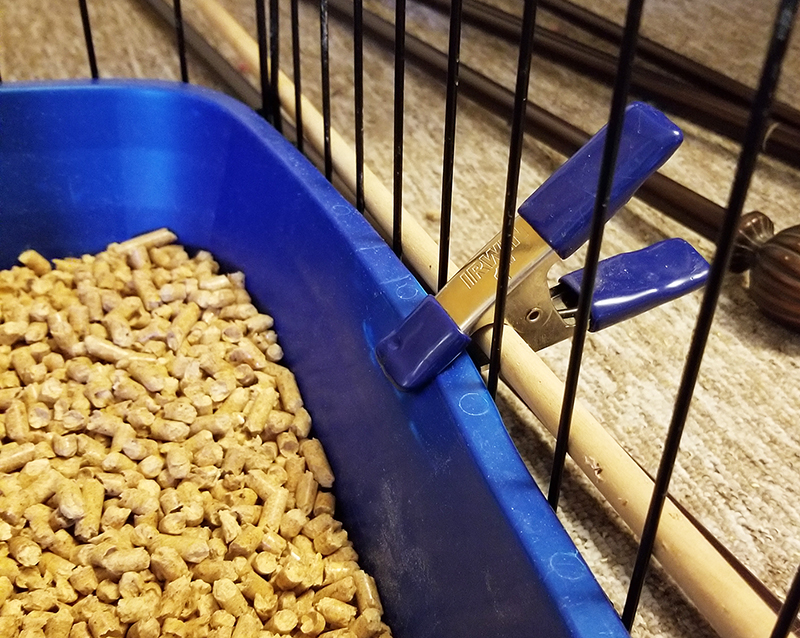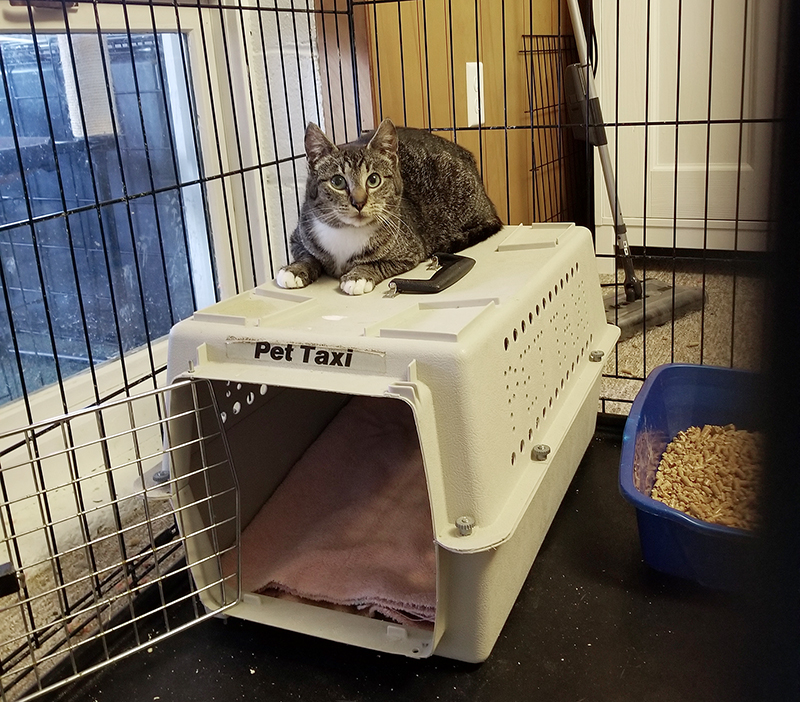Looking to trap a cat? These tips and recommendations will help increase your likelihood of success and keep you and the trapped cat safe.
If you need to borrow a trap from CNYCC, please email us at cnycc@outlook.com.
Before returning a borrowed CNYCC trap, please wash thoroughly with dish soap and water, then disinfect with 1 part regular bleach to 32 parts water, then rinse. A dish or toilet brush works very well for scrubbing inside the trap.
Trapping Tips (Download PDF version of information)

- Trap/Neuter/Release or TNR is a proven method of reducing the feral cat population humanely. A feral colony should have a caretaker who provides food and water daily and appropriate shelter. The cats should also be monitored for illness or injury and for any new cats that might need to be altered.
- Even though a cat may seem friendly, getting it into a carrier is quite another thing. Use of a humane trap is advised for both the safety of cat and human!
- Always have a spay/neuter appointment already set up for the cat before you try to trap because it can take weeks to get an appointment. The exception is if you are trapping relatively young kittens (under 4 months old), you should try to get them as soon as possible to begin the socialization process right away.
- To better guarantee trapping a cat a day or two before surgery, feed the cat in the trap (tie up the trap door so the cat can go in and out without setting it off) for about a week prior to the appointment. Feed at the same time each day, preferably in the early evening. This is only possible if the trap is safely in your yard or is under constant surveillance by you. Other people could activate the trap and make off with a cat and harm it. Always get permission to trap on property that is not your own.
- Try to observe the colony to learn which cats are female, pregnant or nursing. Remember that calicos (white, orange, black or white, peach, gray) and tortoiseshells (orange and black or peach and gray) are always female. Most orange cats are male, but treat unknown orange cats as possible females.
- If kittens are young enough, they might be able to be socialized and adopted. They can be taken from their mother when they have been weaned and are eating soft food at about 4-5 weeks old. Any older and it gets harder with each passing day to socialize them for adoption.
Preparation
- Securely tie the trap door open, so there is no chance of it being activated. Use twine, a bungee cord or even a stick pushed through the wire openings under the door.
- Place it on level ground. If it rocks or tips when a cat tries to enter, the cat may get scared and not go in.
- If the trap is not under cover (garage, covered porch, etc.), use a plastic trash bag or tarp to protect the food and cat. Secure it over the top and two sides with bungees or twine—tape may not survive in the rain. A towel helps on top of the plastic so the rain will be “softened” and the plastic won’t flap too much. Placing a towel under the trap can help to keep it steady and protect the cat when there is snow.
- Newspaper or cardboard can be cut to fit on the bottom of the trap to make it more inviting for the cat to enter.
- Sometimes placing material from the surrounding environment inside the trap and partially on the trip plate itself helps to encourage the cats to enter. A towel or small piece of blanket works too. Use care not to obstruct the action of the trap.
- Do not change anything about the routine of using the trap to train or using it to actually trap. The cats will become suspicious!
Trapping
- Do not trap until you have a vet or clinic appointment for the cat(s).
- Do not feed the night before and don’t put food in the trap until you are ready to catch the cat. This is to make sure they will be hungry and more likely to go in to get the food. Use only a small amount of food when you actually set the trap. Most of the food will go to waste when the trapped cat is upset and too afraid to eat. Best to trap in the early evening (if that’s their regular feeding time) so the cat does not have to be in the trap excessively long.
- The evening before the appointment, remove the twine, bungees or stick from the door and set the trap.
- Do not place any food inside the trap. Instead, place the same wet food normally fed on a flat paper plate or folded pieces of newspaper underneath the trap and let the food push through the wires. This is to prevent a plate or can being trapped with the cat, making more of a mess and possibly injuring the cat.
- Observe the trap from a safe location like a car or house window. If that’s not possible, come back to check the trap regularly. Do not ever leave a trap set overnight without checking it.
After the Cat Has Been Trapped
- Once trapped, immediately place a sheet or towels over all sides of the trap to calm the cat down.
- Look at the cat to see if it has a “tipped” ear, showing it has already been spayed or neutered. A tip is a clean, straight cut removing just the tip of one ear while the cat is under anesthesia. This is a universal sign a cat has been altered.
- If a cat is trapped, and is already ear tipped release it and reset the trap. If you catch a different cat than you meant to, take this cat to the vet appointment anyway because if you release it and try to catch it later, it may not go in the trap again.
- The exception is a nursing mother cat. She must be released until her kittens can be found and caught. Sometimes you can tell if a female is lactating if, when observed from underneath the trap, the fur around each nipple is matted down. If you can’t tell, observe the cat again from below in about 8-10 hours; her mammary glands should be swollen with milk if she has nursing kittens.
- Move the trap, sheet and all, to a safe, warm location under cover for the night. Set plastic on the ground or floor first, then newspaper, then wood blocks (2x4s), so that feces and urine will drop through the trap floor. See that there is a bit of airflow under the sheet while still keeping the trap covered.
- This method creates an automatic fast for the cat before surgery, as the food should drop out of the trap when it’s moved. And there is no dish or bowl inside to injure the cat.
- It is important to act quietly around ferals – during transporting, at clinics and in their recovery care. Take care not to bang the trap or carrier into things, limit stacking traps on top of one another and, overall, take your time when working around these very scared animals. This will help to reduce the stress on them.
- Once you have caught a cat, put out more food for the rest of the colony.
- When transporting the cat and trap to the veterinarian, keep the sheet loosely over the trap.
- Use plastic or towels under the trap in your vehicle to protect the upholstery. DO NOT place the trap in a trunk or open pickup bed. This is too dangerous for the cat.
- Bring a cat carrier with a clean towel to the appointment, as the cat will be placed in the carrier while still under anesthesia.
- Label the trap and carrier with your name and phone number so they can be easily returned to you.
To catch a trap-shy feral cat or a specific cat
- If the cat just won’t go into the trap, try making it more enticing by trying new food options that it might find irresistible, like canned tuna, sardines, or mackerel, or try a few different flavors of regular canned cat food.
- Put a pile of catnip in the back of the trap. The downside is that the cat may rub against the outside of the trap so vigorously that the door may snap shut from the trap’s movement.
- If the cat goes partway into a trap, but won’t step on the trip plate, you may have to trip the trap manually. Use an empty gallon or half gallon plastic bottle or cut piece of wood to prop up the corner of the trap door. Tie a long rope to the bottle/wood that allows you to sit 20 feet or so away. When the cat is far enough into the trap, you can yank the bottle away and cause the trap door to shut.
Using a drop trap
- These can be used when a cat is trap-shy.
- The drop trap is a large metal cage with no bottom that is propped up on one end. When a cat is underneath the trap, the leg prop is pulled by a rope, dropping the cage down over the cat.
- Often, this method can trap multiple cats or kittens at once when they all come to eat from a plate of food.
Surgery recovery
- A cat should be kept confined for a short recovery after being spayed or neutered. This lessens the chance that an infection will develop or that a female will rip out her stitches.
- A male cat’s incision has no stitches and will be similar to an open wound. It will take 2-3 days for this area to scab over, so that bacteria will not be as apt to start an infection. A female cat will have stitches that gradually dissolve and do not have to be removed.
- Keep the cat in a 3-foot-long wire dog cage or small room for its recovery period.
- Males: 3-5 days; Females: 7-10 days or longer if possible. Because females will have their entire belly shaved, it’s important to keep them longer in the winter to allow some hair to grow back to help them stay warm.
- The dog crate should be large enough to accommodate a cat carrier for the cat to sleep and hide in, a small litter box, and a food and water dish. Keeping the carrier in the crate makes it considerably easier to transport the cat back to the place where it will be released. Use a small litter box or a plastic shoebox secured with a clamp to the side of the crate. The clamp is to keep the cat from tipped or moving the box. You can get inexpensive and good quality small clamps at a local hardware store. You can also clamp the food and water bowls to the sides since feral cats frequently knock them over as they frantically try to escape the crate.



- Get a long-handled “gripper” tool, back scratcher, or other long narrow stick to adjust things in the crate when the cat is inside and has caused a mess.
- Place a sheet over the cage except for the front door, so the cat will be encouraged to hide in the back and not feel so exposed. If not too hot, the sheet can also be pulled down over the front after the cat is inside. That way, it may not try quite as much to get out through the wires of the door.
- If you need to access the crate to clean the box or fill food/water, try to get the cat to go into the carrier. Then from the outside using the gripper or stick, close the carrier door and hold it shut so you can safely reach in and lock the carrier. With the cat safely locked in the carrier, you can do any cleaning. Once you’re done, use the stick to hold the door shut while you unlatch it and close the crate door.
Releasing the cat
- Secure the cat in the carrier in the crate and cover it with a sheet or towel for transport.
- Ideally, the cat will be released in the same location where it was trapped so it is familiar with the area and can find food and shelter again.
- Release the cat from its carrier with the door facing away from you and any potentially dangerous traffic or situations.
- If you notice any problems during recovery, contact the vet or clinic per their instructions.
Relocating ferals
- It is not recommended to relocate ferals to another colony. They can become disoriented in a new environment, driven out, and even killed by area cats.
- If you must relocate a feral to another colony or barn, they must be confined in a dog crate for at least two weeks in order for them to understand that they are in a new home and choose to stay there.
Equipment
- Equipment and accessories should be washed and then disinfected between cats or before returning borrowed items. After a scrubbing with hot soapy water and rinsing, use 1 part bleach to 32 parts water to disinfect. A toilet brush is a handy tool for cleaning traps. To finish, spray down everything again with water.
Thank you for caring about the cats and taking the responsibility to prevent future litters.
